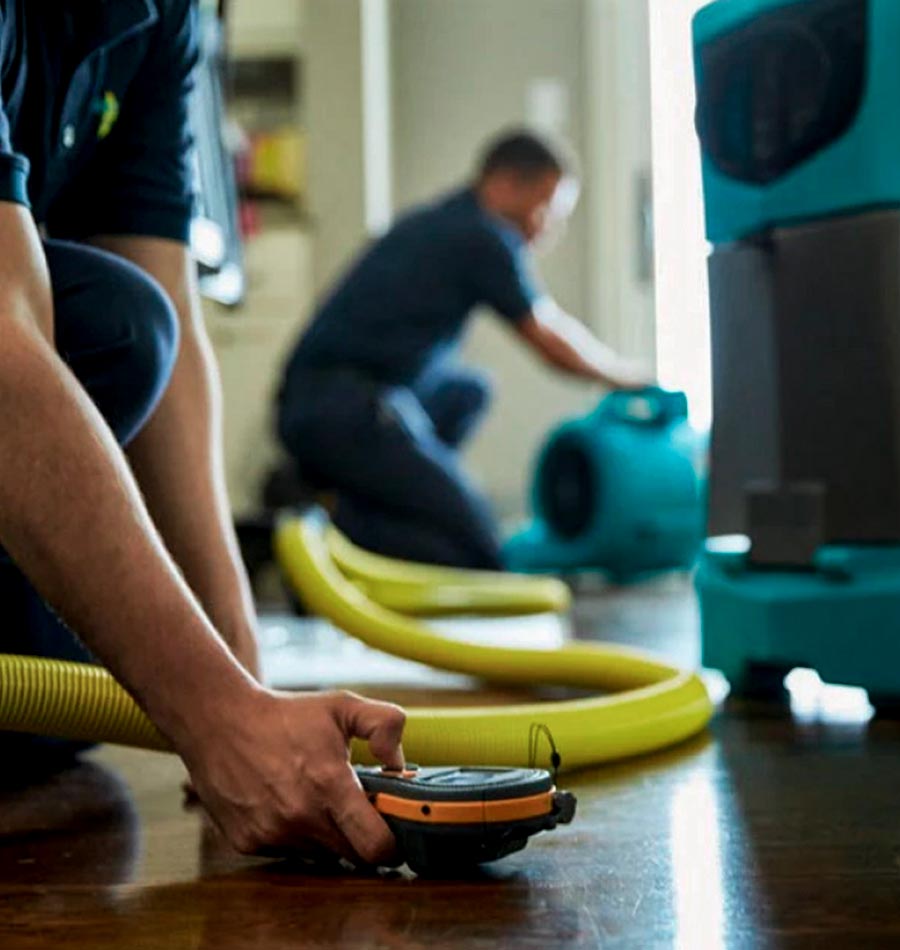Water Damage Restoration
Water Damage Solutions: Let Us Handle It for You

What to Do Before Help Arrives for Water Damage
Facing water damage in your property can be overwhelming, but taking immediate steps before professional help arrives can make a significant difference in minimizing the impact. Here's what you can do:
Ensure Safety:
Before entering water-damaged areas, turn off the electricity to prevent electrocution hazards. If the water level is high, avoid wading into it.
If the water damage is due to a burst pipe or leaking appliance, try to stop the water flow by turning off the main water supply.
Move Belongings:
If safe to do so, move valuable or delicate items to a dry area.
Elevate furniture and belongings off the wet floor to prevent further damage.
Ventilation:
Open windows and doors to facilitate air circulation and help with drying. Avoid doing this if the outdoor air is humid, as it can worsen the moisture issue.
Remove Excess Water:
Use buckets, mops, and towels to remove as much standing water as possible. This can help prevent further saturation.
Prevent Mold Growth:
Mold can start growing within 24-48 hours. If possible, use fans and dehumidifiers to reduce humidity levels and deter mold growth.
Our Process
Emergency Response and Assessment
- Quick Response: When you reach out to DRY US, our rapid response team springs into action, arriving at your property promptly to assess the situation.
- Thorough Assessment: We perform a comprehensive evaluation to determine the extent of the water damage. This assessment guides our restoration plan.
- Source Identification: Our experts identify the source of the water intrusion, addressing it to prevent further damage.
Water Removal and Drying
- Water Extraction: We use specialized equipment to remove excess water from affected areas, preventing further saturation.
- Drying Process: Our industrial-grade dehumidifiers and air movers are strategically placed to facilitate rapid and thorough drying.
- Moisture Monitoring: We continuously monitor moisture levels to ensure complete drying, preventing mold growth and structural issues.
Restoration and Finalization
- Structural Repair: Our skilled technicians restore damaged structures, replacing materials when necessary to restore your property's integrity.
- Cleaning and Sanitization: We thoroughly clean and sanitize affected areas, ensuring a safe and hygienic environment.
- Final Inspection: Our final inspection guarantees that all restoration work meets our quality standards, and your property is ready for occupancy.
“Trust US”
Frequently Asked Questions
Got questions about water damage and restoration? We've got answers. Explore our frequently asked questions to gain a better understanding of the restoration process and how DRY US can help you in times of water damage crises.
01 How Quickly Should I Act After Water Damage Occurs?
Properties can experience water damage in three primary ways: over time from slow leaks, from a sudden and specific incident, or due to a weather-related event. No matter the cause, it’s essential to act swiftly to limit the damage and stop mold from developing.
02 Can I Handle Water Damage Restoration Myself?
Water damage restoration can be difficult and risky to handle on your own, particularly if the damage is significant. Although minor leaks may seem manageable, professional expertise is crucial for proper drying, mold prevention, and addressing structural concerns. Consulting an expert is recommended to prevent future issues.
03 How Long Does the Restoration Process Take?
The duration of the water damage restoration process depends largely on the severity of the damage. Minor cases may take just a few days to resolve, while more extensive damage could take several weeks to fully restore. The size of the affected area, the materials involved, and the drying time all contribute to the overall timeline.
04 Is Water Damage dangerous?
Water damage can pose serious dangers if left untreated. It can compromise the structural integrity of a building, weaken materials, and encourage mold growth, which is harmful to health. Additionally, standing water can create electrical hazards or become contaminated. Addressing water damage swiftly is crucial to avoid these risks.
